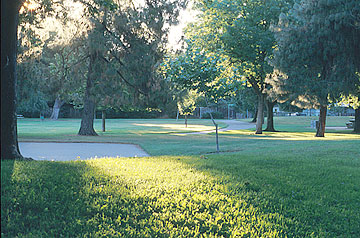- Home
- Learn about salinity
- Get to know your site
- Design a landscape
- Solve a problem
- Other information
Salinity Management Guide

The more you know, the more successfully plants under your care will grow. That’s true for any landscape. It’s especially true for a landscape irrigated with recycled water or other water of elevated salinity. Salinity-related particulars worth investigating for such a landscape are as follows:
- certain chemical characteristics of the water used for irrigation
- certain chemical and physical characteristics of the site's soil
- the tolerances to salinity of species of plants already in use at the site or being considered for future use
- the geology, hydrology, and topography of the site, especially for those areas exhibiting signs of salinity stress or areas where soil tends to be saturated with water (which sometimes leads to salinity problems)
The information you gather during your investigations provides a reality-based foundation for decision-making and for certain design activities. For an existing landscape, the information will help with deciding the following:
- whether it's feasible to switch to recycled water for irrigation
- whether a change in the method, frequency, or timing of irrigation might be beneficial
- what amount of leaching is optimal (if leaching is allowed by local regulatory agencies)
- whether to reduce the applications of certain fertilizers, and, if so, the amount of reduction
- whether to replace certain species of plants with ones that are more salt-tolerant
For a new landscape, the information will also help with:
- designing appropriate irrigation systems
- identifying problems in the movement of water through the soil and correcting those problems by improving the soil's structure or by improving drainage
- avoiding the use of salt-sensitive species of plants
| « Previous module | Next page » |